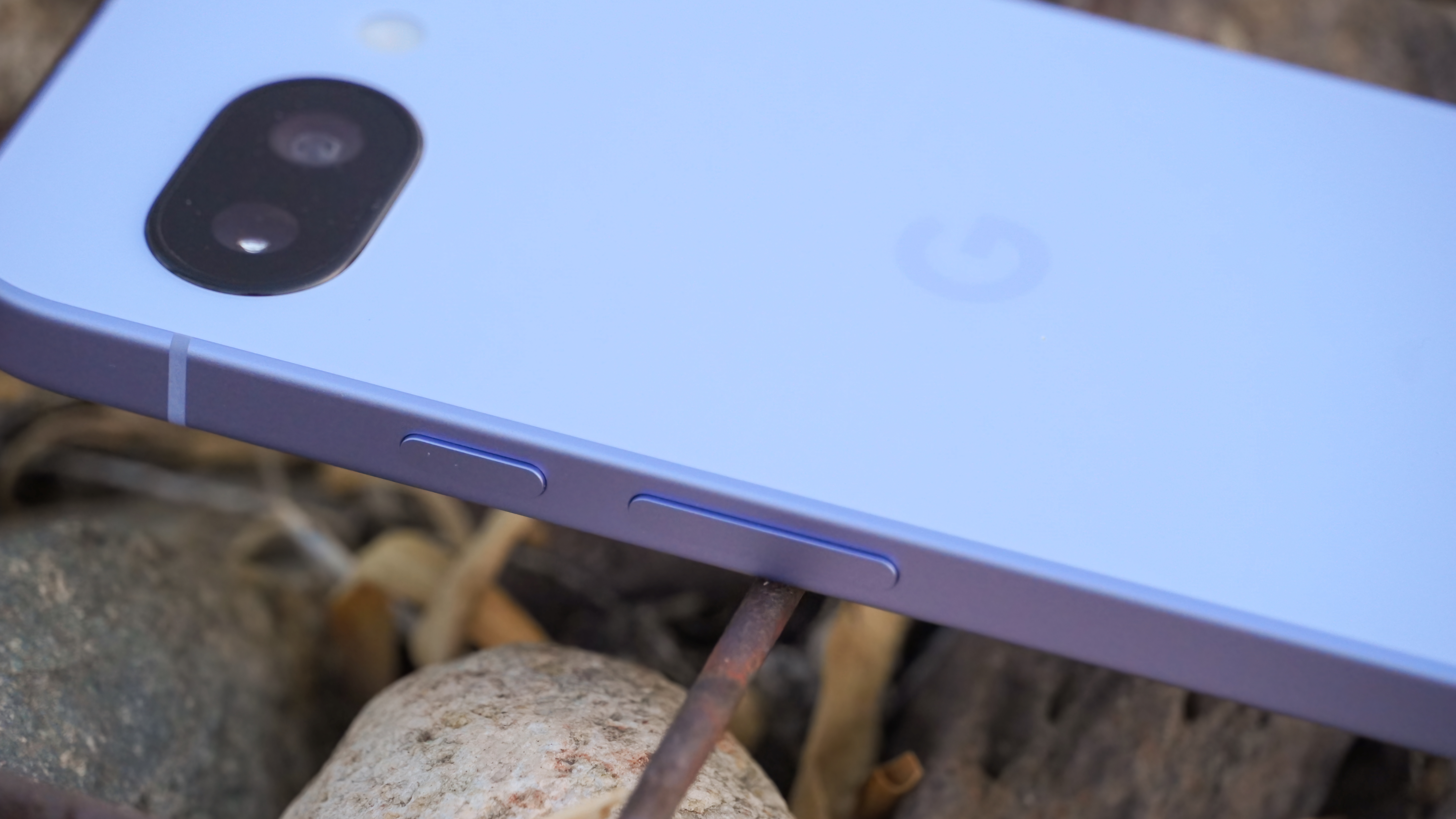
We've spent over a month with the Google Pixel 9a, and it's a budget phone with a new identity. At its core, the Pixel 9a is a more affordable version of the Pixel 9 with a handful of tricks up its sleeve. The company added a nearly flat design, long battery life, and a new camera system to help differentiate the Pixel 9a from past A-series models — and it worked. At just $499, it's easy to see the true value of the Pixel 9a.
In addition to bulked-up hardware, the Pixel 9a also comes with a fresh look. Gone is the classic camera bar that had come to become a hallmark of Pixel phones. Instead, we have a much flatter, cleaner, and more minimalistic monochrome outfit with the 9a. Love it or hate it, it is what it is.
If you're not planning on buying the more expensive Pixel 10 series later this year, the Pixel 9a could be a great alternative to settle for. In fact, it seems like the 9a could very well be one of the best mid-range Android phones of 2025. To find out everything there is to know about Google's latest mid-ranger and what makes it so great, read on.
Google Pixel 9a: Price and availability
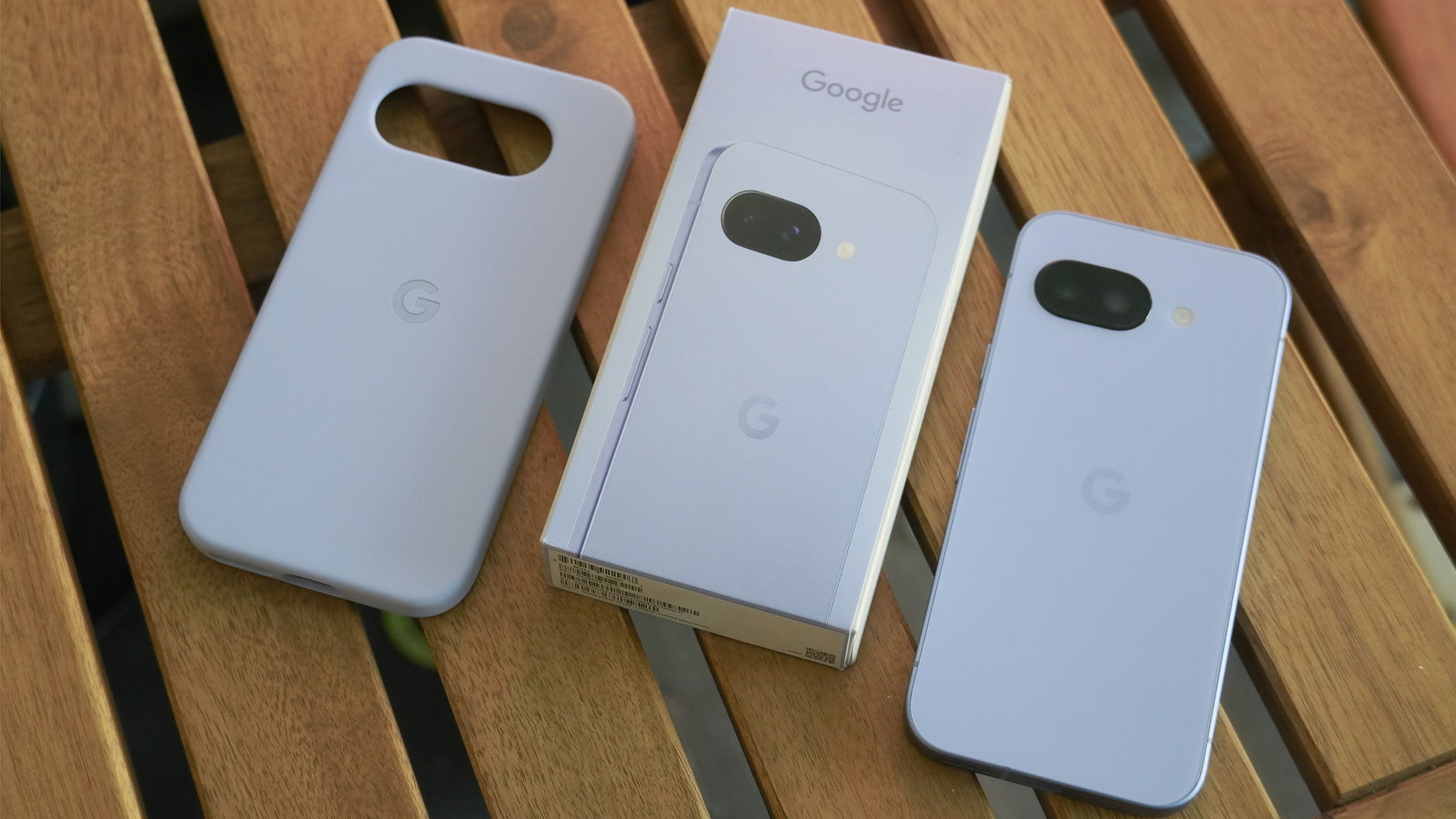
Google revealed the Pixel 9a for the first time on March 19 with a starting price of $499. The phone officially became available for purchase on April 10 from the Google Store, cellular carriers, and third-party retailers. The Pixel 9a is available in four colors: Porcelain, Obsidian, Iris, and Peony. It starts with 128GB of storage and can be upgraded to 256GB. You need to add another $100 to get that extra storage though, racking up the total bill to $599.
For the first time, you can get the Google Pixel 9a in any color and storage configuration you'd like. Previously, if you wanted to get a Pixel A-series phone with 256GB of storage, you had to choose the black (Obsidian) option.
Plus, new Pixel 9a buyers get six months of Fitbit Premium, three months of YouTube Premium, and three months of Google One for free. That adds up to about $100 in value, assuming you don't have them already.
Google Pixel 9a: Design and display
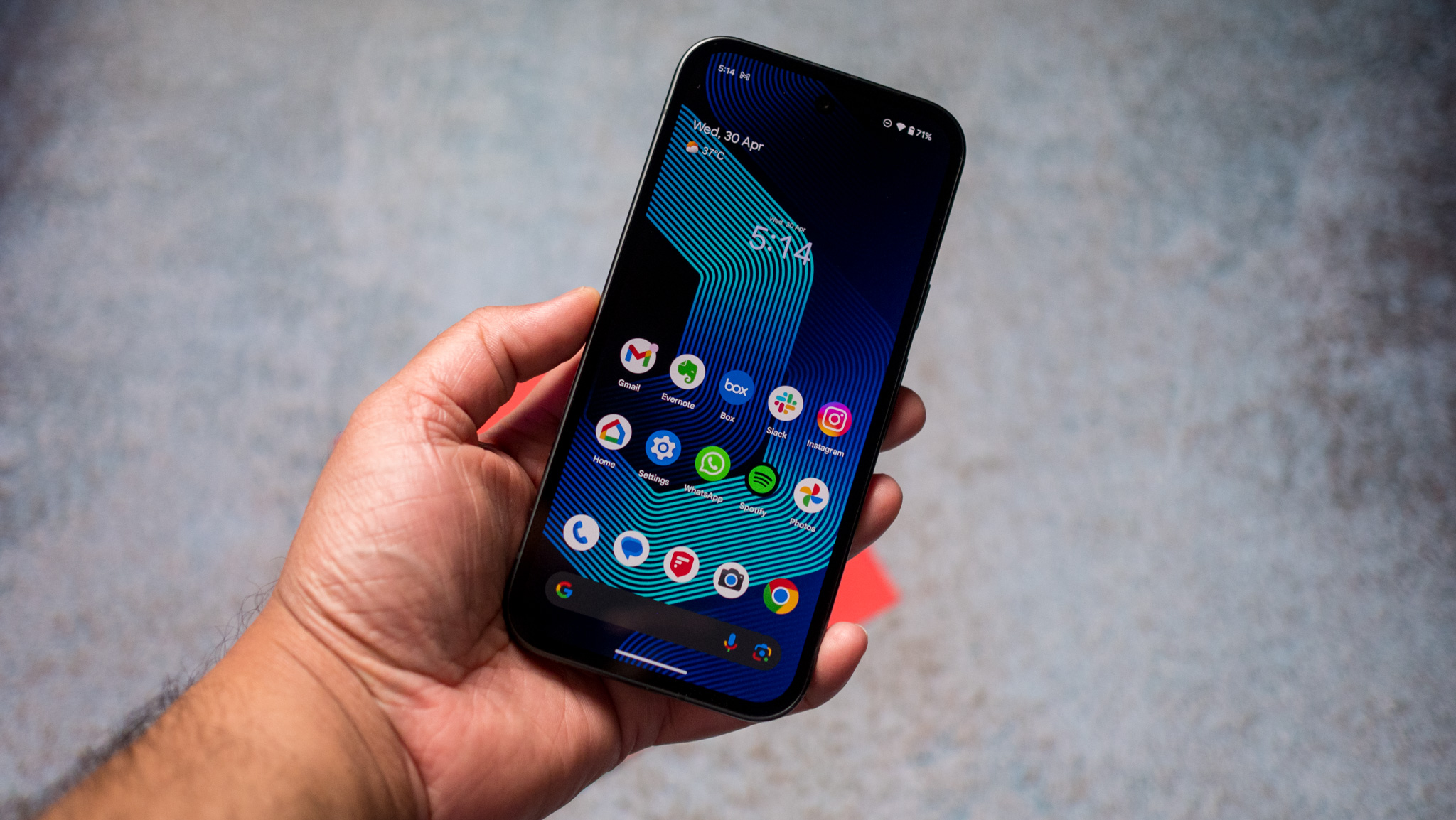
Historically, the Pixel A series has used a design similar to that of the main series but with a few tweaks. In the Pixel 8a's case, the corners had a slightly wider curve than the Pixel 8 series, making it even more of a squircle. Google made a massive design shift with the Pixel 9 series, dropping the friendly curves of the last four Pixel releases and going for a much more industrial design.
Google has changed things up once again, keeping the flat side rails of the Pixel 9 series and further flattening the overall design by removing the trademark Pixel camera bar on the back. The camera island had gained a cult following and became a hallmark of new Pixels, so not everyone is pleased about the change.
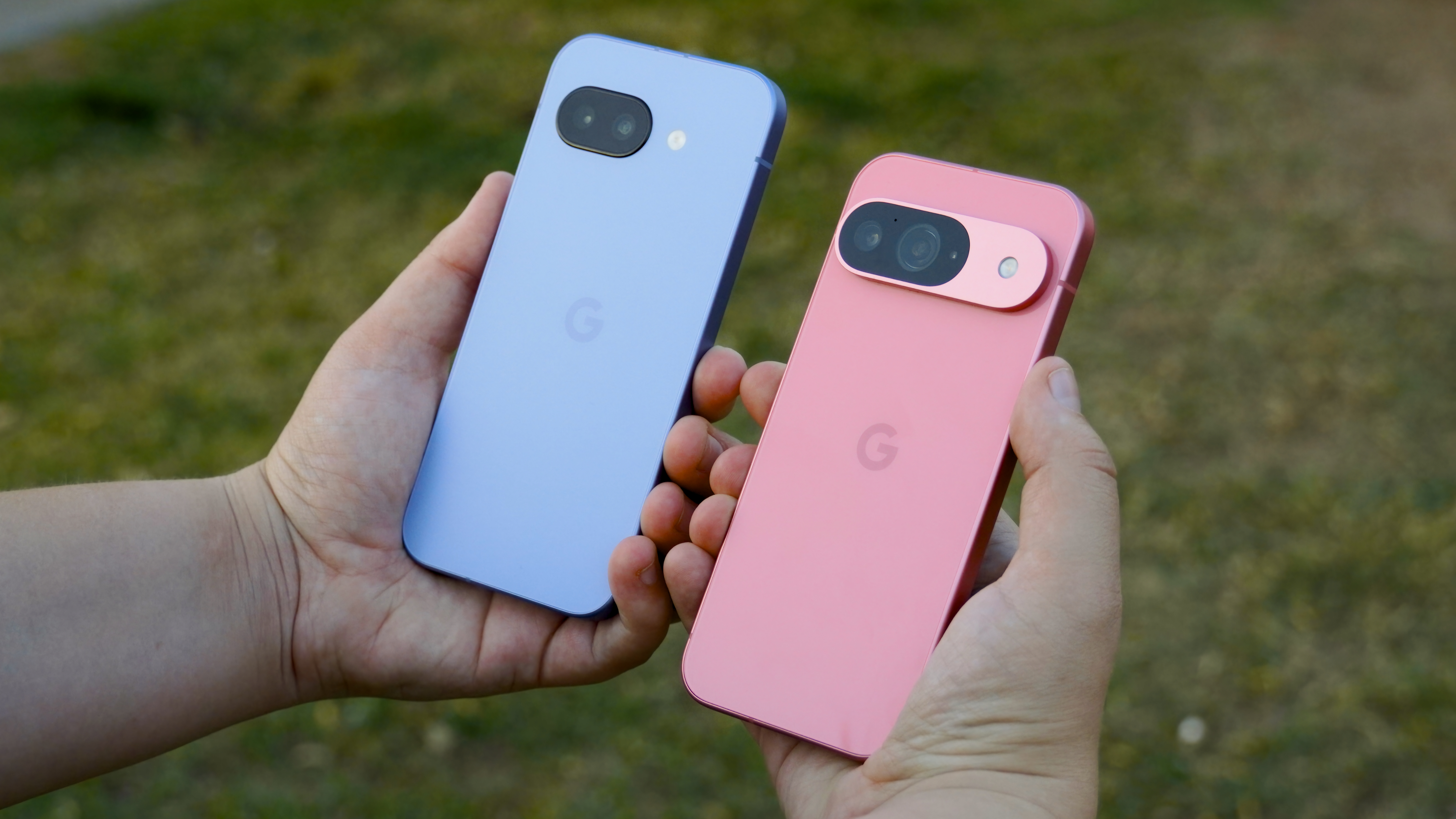
While prior leaks suggested the camera cutout on the back of the Pixel 9a would be flush or recessed, that isn't actually the case. The lens cover for the Pixel 9a's two rear cameras protrudes from the back of the phone slightly, so there's a small bump. The back cover of the device is made out of polycarbonate plastic, and the side rails have a satin metal finish. On the front, there's Gorilla Glass 3.
The Pixel 9a comes in Peony, Obsidian, and Porcelain — all Pixel 9 colors — and a fourth Iris color instead of Wintergreen. Google sells official color-matched cases, too.
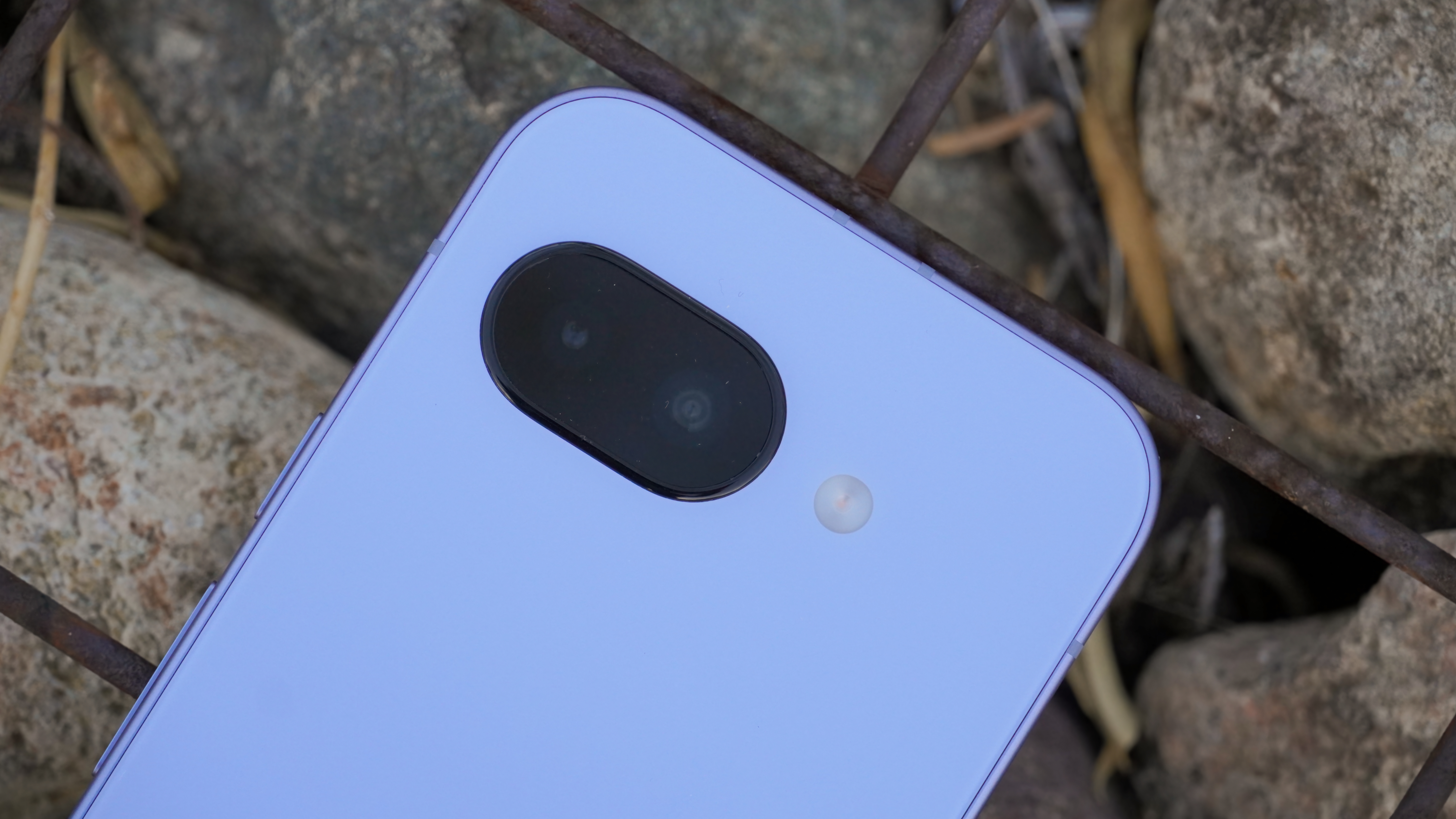
The Pixel 9a has a pOLED panel that measures 6.3 inches and comes with a FHD+ resolution, 1,800 nits of HDR brightness, 2,700 nits at peak brightness, and a 120Hz refresh rate. Compared to the Pixel 8a, the Pixel 9a display will be distinctly larger. It's also 400 to 700 nits brighter depending on the context, but otherwise match it for smoothness, resolution, and durability.
Fans of small phones may be disappointed, but there's good news: the 6.3-inch Pixel 9a weighs about 2g less than the 6.1-inch 8a. Even if it doesn't look as striking from the back, you may appreciate the extra visual space in front.
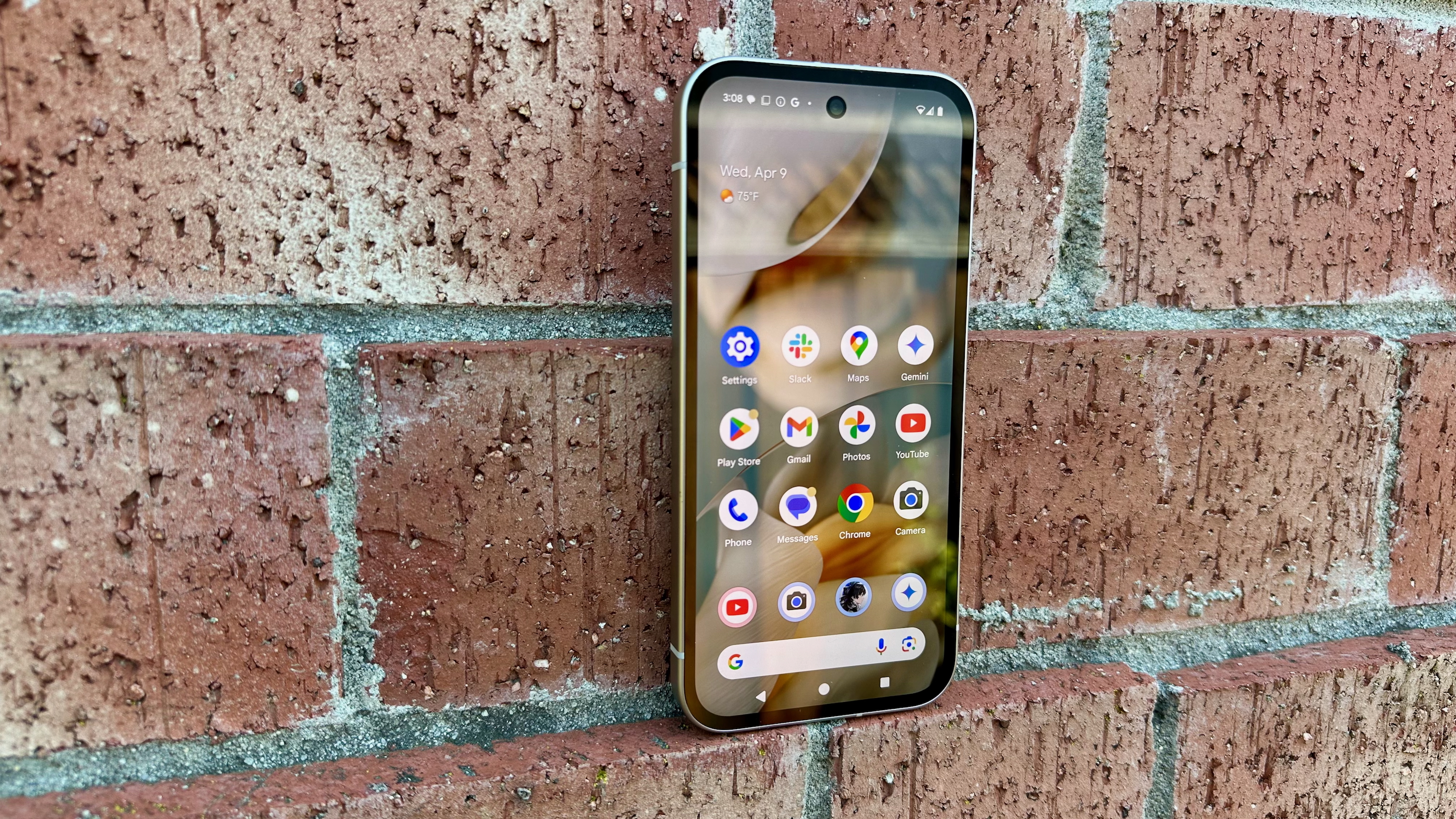
The Google Pixel 9a measures 154.7mm x 73.3mm x 8.9mm, which is just as thick as the Pixel 8a but wider and taller. It'll feel different in the hand since the thickness of the Pixel 9a is more uniform than its predecessor. At 185.9 grams, the Pixel 9a is heavy for a smartphone of its size but remains lighter than the Pixel 8a.
Google Pixel 9a: Cameras
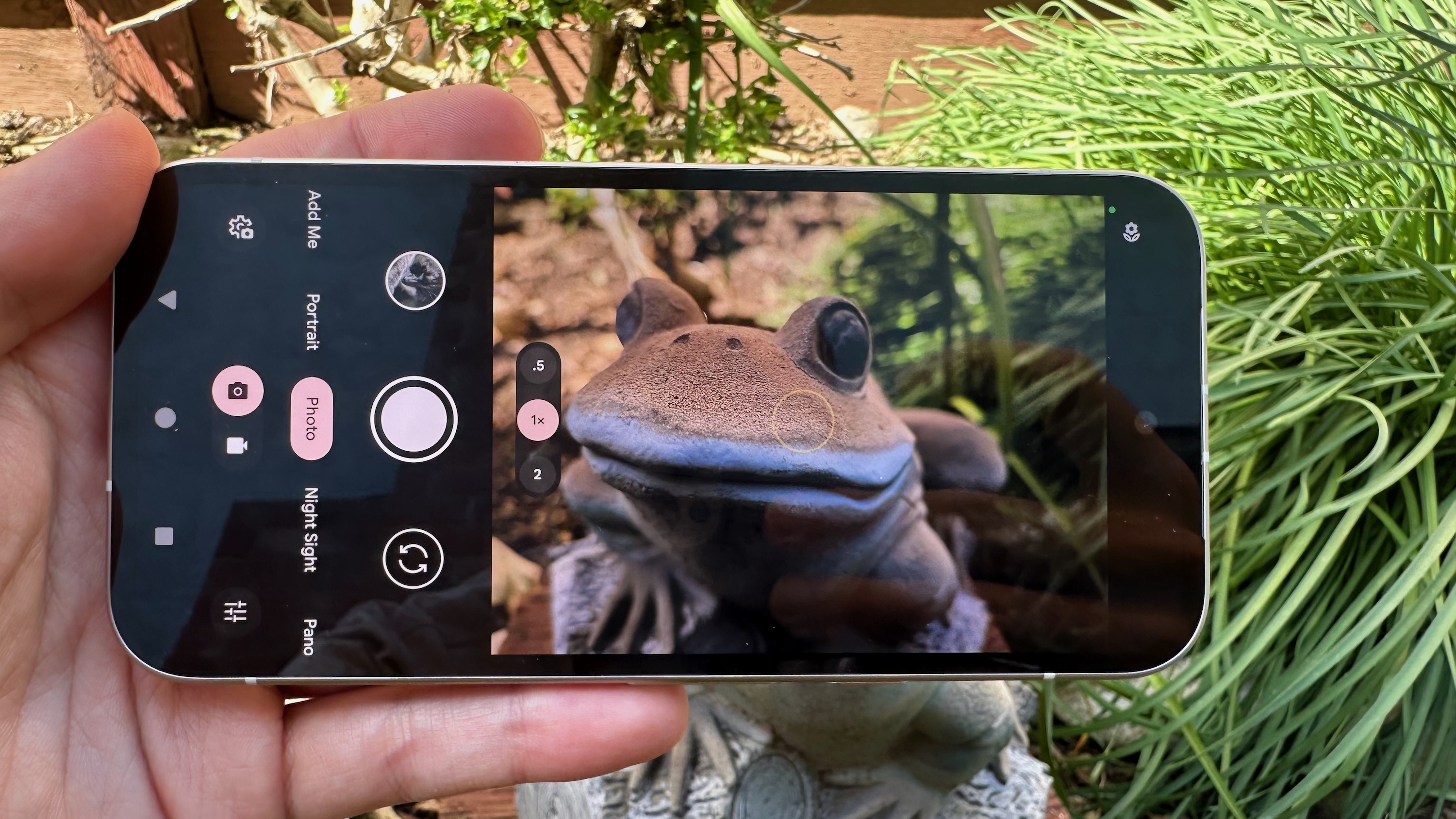
The Google Pixel 9a now features a 48MP main sensor, similar to the one found on the Pixel 9 Pro Fold. It's a 48MP GN8 Quad Dual Pixel primary camera with an f/1.7 aperture and a 1/2-inch image sensor size. It delivers optical quality at 0.5x and 1x when paired with the 13MP ultrawide lens, but there's still no telephoto or sensor crop offering here. Super Res Zoom, which is a digital zoom with enhancements, is available up to 8x.
The secondary ultrawide camera stays at 13MP and offers a 120-degree field of view, matching the Pixel 8a. The front-facing camera remains at 13MP, too.
In other words, only the main sensor is changed from what the 8a offered, at least for hardware. That doesn't include the full slate of new software tricks Google is bringing to the Pixel 9a for the first time. You get features like Add Me, Astrophotography mode, and Real Tone on the Google Pixel 9a as well.
As our reviewer Michael Hicks mentioned in his review, the Pixel 9a captures vivid color detail better than the Pixel 8a and many other similarly priced phones, however, you need good lighting conditions and need to be close enough to capture these details.
If you're interested in a more in-depth exploration of the Pixel 9a's photography prowess, you can read the comprehensive Google Pixel 9a, 8a, and 7a camera comparison.
Google Pixel 9a: Specs and performance
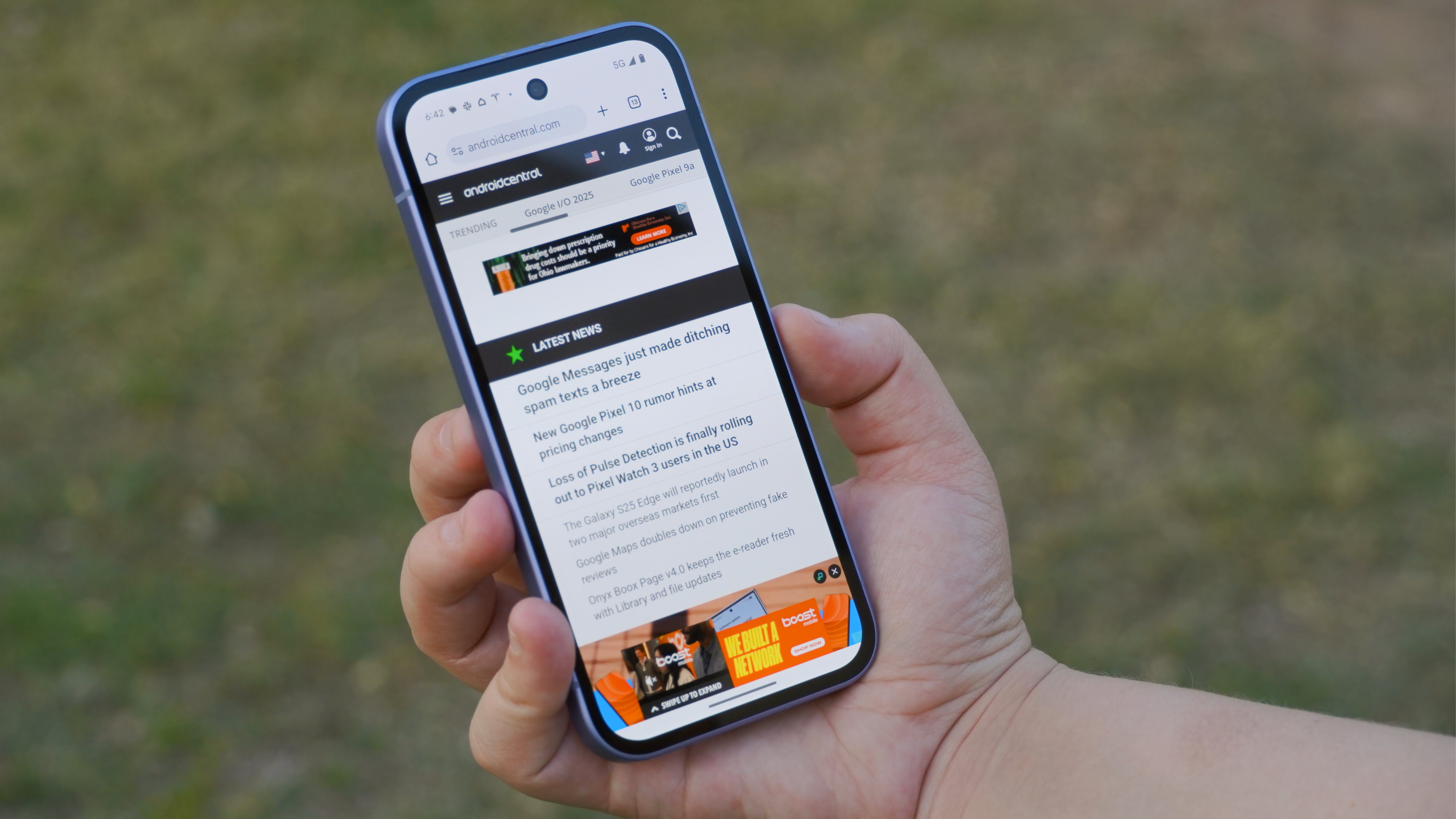
The Google Pixel 9a uses the same Google Tensor G4 processor as the Pixel 9, paired with a Titan M2 security processor. This was all but assured because Google has used Tensor in the last three generations of Pixel A series phones.
Tensor G4 is only a minor upgrade over the Tensor G3 in most respects, although it's capable of processing specific AI-related tasks faster than some other leading flagship processors. It also runs quite a bit cooler than the Tensor G3 but at the expense of being slower in gaming and other heavier graphics processing-based scenarios.
When it comes to real-world testing, Hicks found the performance capabilities of the Pixel 9a to be on par with the flagship Pixel 9.
Google is not expected to deliver a massive upgrade to its Tensor line until Tensor G5, currently slated for the 2025 release of the Pixel 10 series — and then the Pixel 10a, in theory.
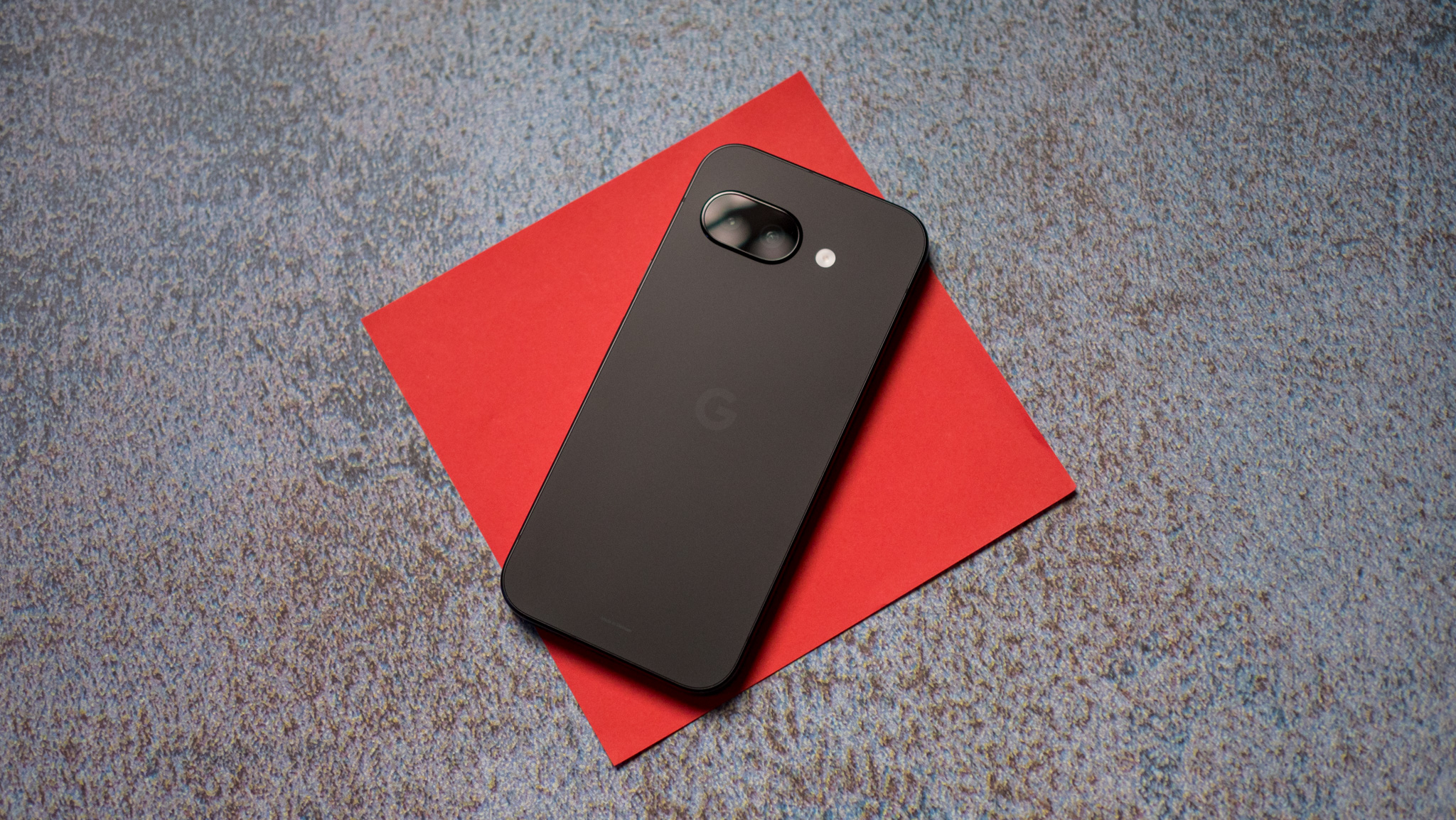
The Pixel 9a tech specs sheet provides other key details: 8GB of RAM, 128GB or 256GB of UFS 3.1 storage, Android 15 with seven years of updates, a 5,100mAh battery, 23W wired and 7.5W wireless charging, an under-display fingerprint sensor, and Wi-Fi 6E.
Category |
Google Pixel 9a |
|---|---|
Processor |
Google Tensor G4 |
Display |
6.3-inch Actua pOLED display, 1080 x 2424 resolution, 120Hz, 2700 nits peak brightness |
Operating System |
Android 15 |
Memory |
8GB |
Storage |
128GB, 256GB |
Battery |
5,100 mAh |
Charging |
23W wired, Qi wireless charging |
Rear camera(s) |
48 MP wide camera, 13MP ultrawide camera |
Front camera |
13MP front camera |
Durability |
IP68, Gorilla Glass 3 |
Colors |
Obsidian, Porcelain, Iris, Peony |
Weight |
185.9 grams |
Dimensions |
154.7mm x 73.3mm x 8.9mm |
The Pixel 9a and Pixel 8a thus have comparable memory, storage, software support, security, and connectivity. The key differences are in battery and charging, as the newer model adds about 600mAh capacity and an additional 5W and 2.5W to its wired and wireless charging speed.
A small performance boost, with comparable specs otherwise, seems reasonable given that Google made so many requested spec upgrades, like the display refresh rate, in the Pixel 8a. The redesign and larger display seem to be Google's focus with this generation, with the truly meaningful highlight of the 9a being the noteworthy improvement in its battery life.
While the Pixel 9a is missing a few Android 15 features, it is receiving security updates and bug fixes. The May 2025 security update is rolling out now for the smartphone with bug fixes and a patch for a zero-day security vulnerability, so Pixel 9a owners should install it as soon as possible.
The Pixel 9a is also eligible for the Android 16 beta. It can also run the Android 16 QPR1 Beta 1, which offers a preview of Material 3 Expressive. When available, Material 3 Expressive will overhaul the look of the Pixel 9a's software, making it colorful and prominent.







